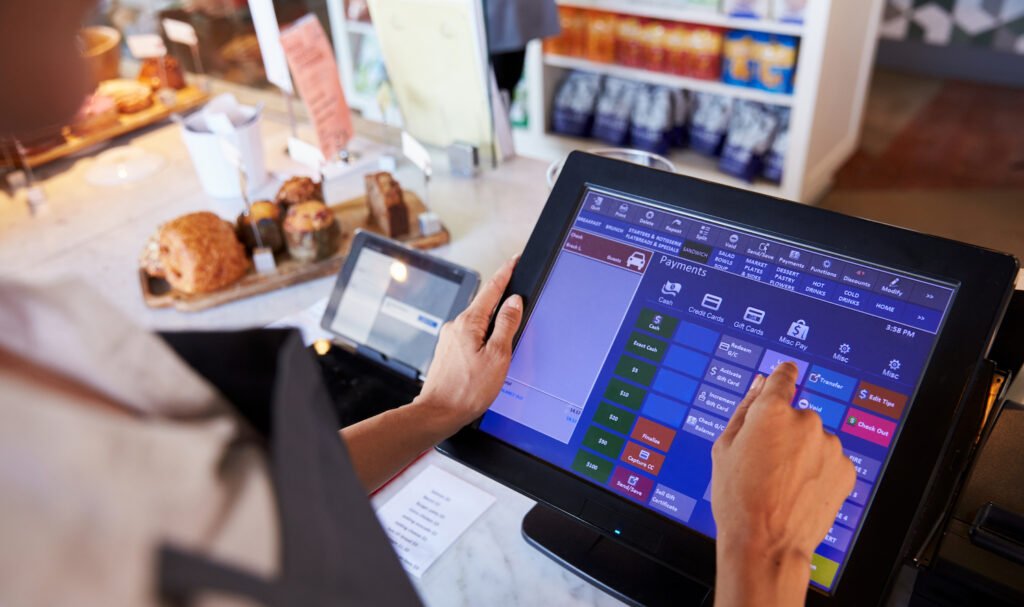Choosing the best payment processing software for small business can make or break your customer experience and bottom line. With over 33.2 million small businesses in the United States alone, the competition for seamless payment solutions has never been fiercer. Whether you’re running a local coffee shop, an e-commerce store, or a service-based business, having the right payment processing system is crucial for accepting credit cards, digital wallets, and online payments efficiently.
The modern small business landscape demands payment solutions that go beyond simple transaction processing. Today’s entrepreneurs need integrated systems that handle everything from inventory management to customer relationship management, all while maintaining PCI compliance and protecting sensitive customer data. Finding the best payment processing software for small business means evaluating factors like transaction fees, integration capabilities, security features, and scalability options that will grow with your company.
Why Small Businesses Need Reliable Payment Processing Software
Small businesses face unique challenges when it comes to payment processing. Unlike large corporations with dedicated IT departments and substantial budgets, small business owners need solutions that are both powerful and user-friendly. The right payment processing software can streamline operations, reduce manual errors, and provide valuable insights into customer purchasing behaviors.
Payment processing software serves multiple critical functions for small businesses:
Modern consumers expect flexibility in how they pay. A comprehensive payment system allows you to accept various payment methods including credit cards, debit cards, mobile payments like Apple Pay and Google Pay, bank transfers, and even cryptocurrency in some cases. This versatility can significantly impact your sales volume and customer satisfaction rates.
Security and compliance represent another crucial aspect. Payment Card Industry Data Security Standard (PCI DSS) compliance isn’t optional – it’s mandatory for any business handling credit card transactions. The best payment processing solutions handle these compliance requirements automatically, protecting both your business and your customers from data breaches and fraud.
Integration capabilities can transform your business operations. When your payment system integrates seamlessly with your accounting software, inventory management system, and customer relationship management (CRM) platform, you eliminate duplicate data entry and gain real-time insights into your business performance.
Key Features to Look for in Payment Processing Software

Transaction Processing Speed and Reliability
Speed matters in payment processing. Customers expect quick, seamless transactions whether they’re shopping online or standing at your checkout counter. Look for solutions that process transactions in under three seconds and offer 99.9% uptime guarantees. Slow or unreliable payment systems can lead to abandoned carts, frustrated customers, and lost revenue.
Real-time processing capabilities enable immediate transaction verification and faster fund transfers to your business account. Some processors offer same-day or next-day deposits, which can significantly improve your cash flow management.
Multi-Channel Payment Acceptance
Omnichannel capabilities allow you to accept payments across various touchpoints. Whether customers want to pay in-store, online, through a mobile app, or over the phone, your payment system should handle all scenarios seamlessly. This flexibility is particularly important for businesses operating both physical locations and online stores.
Mobile payment compatibility has become essential as contactless payments surge in popularity. Ensure your chosen solution supports NFC payments, QR code transactions, and mobile wallet integrations.
Security and Fraud Protection
Advanced security features protect your business from costly chargebacks and fraudulent transactions. Look for solutions offering tokenization, encryption, and advanced fraud detection algorithms that analyze transaction patterns in real-time.
PCI compliance management should be handled automatically by your payment processor, reducing your compliance burden and associated costs. The best solutions provide detailed security reports and notifications about potential threats.
Top Payment Processing Software for Small Businesses
The payment processing landscape offers numerous options, each with unique strengths and target audiences. Here’s a comprehensive analysis of the leading solutions that consistently rank as the best payment processing software for small business operations.
Square: The All-in-One Solution
Square has revolutionized payment processing for small businesses by offering a comprehensive ecosystem of tools that go far beyond simple transaction processing. What started as a small square card reader has evolved into a complete business management platform.
Square’s pricing structure is transparent and competitive. They charge 2.6% + 10¢ for in-person transactions and 2.9% + 30¢ for online payments, with no monthly fees for basic plans. This straightforward pricing model makes it easy for small business owners to predict their processing costs.
The platform’s strength lies in its integration capabilities. Square offers point-of-sale systems, inventory management, employee scheduling, customer relationship management, and even lending services. This comprehensive approach means you can manage your entire business through a single platform.
Hardware options include everything from basic card readers to full-featured point-of-sale terminals. Square’s hardware is known for its reliability and ease of use, making it particularly attractive to businesses without technical expertise.
Stripe: The Developer-Friendly Choice
Stripe dominates the online payment processing space with its robust API and extensive customization options. While it requires more technical knowledge to implement, the flexibility and scalability make it ideal for businesses with unique requirements or rapid growth plans.
Stripe’s pricing is competitive at 2.9% + 30¢ for online transactions, with additional fees for international payments and currency conversions. The platform excels at handling complex payment scenarios, subscription billing, and marketplace transactions.
Integration possibilities with Stripe are virtually limitless. The platform connects with hundreds of business tools, e-commerce platforms, and custom applications. This flexibility makes it the preferred choice for businesses that need tailored payment solutions.
Advanced features include sophisticated fraud detection, detailed analytics, and support for over 135 currencies. Stripe also offers specialized products for subscription businesses, marketplaces, and platforms.
PayPal Business: The Trusted Brand
PayPal’s brand recognition provides immediate customer trust and confidence. Many consumers already have PayPal accounts, making checkout processes faster and reducing friction in the payment experience.
PayPal’s fee structure varies depending on transaction type and volume. Standard rates are 2.9% + $0.30 for online transactions, with reduced rates available for higher-volume merchants. They also offer competitive rates for in-person transactions through their card readers.
The platform offers multiple payment acceptance methods including PayPal payments, credit cards, debit cards, and PayPal Credit. This variety can increase conversion rates by providing customers with their preferred payment options.
International capabilities are particularly strong with PayPal, supporting transactions in over 200 markets and 25 currencies. This makes it an excellent choice for businesses with global customer bases.
Authorize.Net: The Established Player
Authorize.Net has been serving businesses since 1996 and offers a mature, feature-rich platform that handles complex payment scenarios with ease. Their experience in the industry translates to robust fraud prevention tools and reliable transaction processing.
Pricing includes a monthly gateway fee of $25 plus per-transaction fees starting at 2.9% + $0.30. While this monthly fee might seem high for very small businesses, the advanced features and reliability justify the cost for many merchants.
Advanced fraud detection includes customizable filters, velocity checks, and integration with third-party fraud prevention services. These features help businesses minimize chargebacks and fraudulent transactions.
Reporting and analytics capabilities provide detailed insights into transaction patterns, helping businesses optimize their payment processes and identify growth opportunities.
Comparing Transaction Fees and Pricing Models
Understanding payment processing fees is crucial for selecting the most cost-effective solution for your business. Different pricing models work better for different business types and transaction volumes.
Flat-Rate Pricing
Flat-rate pricing charges the same percentage for all transactions, regardless of card type or transaction method. This model offers predictability and simplicity, making it easy to calculate processing costs. Square and Stripe both use flat-rate pricing models.
Advantages of flat-rate pricing include transparency, easy budgeting, and no need to understand complex interchange rates. This pricing model works particularly well for businesses with average transaction values and diverse payment methods.
Disadvantages can include higher costs for businesses with large transaction volumes or those primarily accepting lower-cost debit cards. High-volume merchants might save money with interchange-plus pricing models.
Interchange-Plus Pricing
Interchange-plus pricing charges the actual interchange rate set by card networks plus a fixed markup from the processor. This transparent model often results in lower overall costs for businesses with higher transaction volumes.
Benefits include lower overall costs for high-volume merchants, complete transparency in pricing, and the ability to see exactly what you’re paying for each transaction component. Authorize.Net and many traditional merchant service providers use this model.
Challenges include complexity in understanding costs and variable monthly expenses that depend on your customer’s payment preferences. This model works best for established businesses with predictable transaction patterns.
Tiered Pricing
Tiered pricing categorizes transactions into qualified, mid-qualified, and non-qualified tiers with different rates for each category. While this model can offer competitive rates for qualified transactions, it often lacks transparency.
Most modern payment processors avoid tiered pricing due to its complexity and potential for hidden fees. Small businesses generally benefit more from flat-rate or interchange-plus models.
Integration Capabilities and Third-Party Compatibility
The ability to integrate your payment processing system with existing business tools can dramatically improve operational efficiency and provide valuable business insights.
E-commerce Platform Integration
Popular e-commerce platforms like Shopify, WooCommerce, Magento, and BigCommerce all offer extensive integration options with major payment processors. The best payment processing software for small business should seamlessly connect with your online store platform.
Native integrations typically offer the most reliable performance and easiest setup process. Look for payment processors that are officially supported by your e-commerce platform provider.
Custom integrations might be necessary for unique business requirements or proprietary systems. Stripe excels in this area with its comprehensive API documentation and developer resources.
Accounting Software Integration
Automatic synchronization between your payment processor and accounting software eliminates manual data entry and reduces errors. Popular accounting platforms like QuickBooks, Xero, and FreshBooks offer direct integrations with most major payment processors.
Real-time transaction data helps maintain accurate financial records and simplifies tax preparation. Some integrations even automatically categorize transactions and generate financial reports.
Reconciliation features help identify discrepancies between your payment processor records and bank deposits, making month-end accounting processes much more efficient.
CRM and Marketing Tool Integration
Customer data synchronization allows you to track purchasing behaviors, identify valuable customers, and create targeted marketing campaigns. Integration with CRM platforms like Salesforce, HubSpot, or Mailchimp can significantly enhance your marketing effectiveness.
Automated marketing triggers can be set up based on payment events. For example, you might automatically send thank-you emails after purchases or trigger abandoned cart recovery campaigns for incomplete transactions.
Security Features and PCI Compliance
Security remains a top priority for any business handling customer payment information. The best payment processing software for small business must provide robust security measures that protect both merchant and customer data.
PCI DSS Compliance
PCI DSS compliance is mandatory for any business that processes, stores, or transmits credit card information. The Payment Card Industry Data Security Standard includes specific requirements for data encryption, access controls, and security monitoring.
Compliance levels vary based on transaction volume, with Level 1 merchants (over 6 million transactions annually) facing the most stringent requirements. Most small businesses fall into Level 4 (fewer than 20,000 e-commerce transactions or 1 million other transactions annually).
Managed compliance solutions offered by payment processors can significantly reduce the burden on small business owners. Many processors handle PCI compliance requirements automatically, providing necessary security measures and documentation.
Fraud Prevention Tools
Machine learning algorithms analyze transaction patterns in real-time to identify potentially fraudulent activities. Advanced systems consider factors like transaction location, purchase patterns, and customer behavior to flag suspicious transactions.
Address Verification Service (AVS) compares billing addresses with credit card company records to verify cardholder identity. This simple check can prevent many fraudulent transactions without impacting legitimate customers.
Card Verification Value (CVV) checks provide additional security for card-not-present transactions by verifying the three or four-digit security code on credit cards.
Data Encryption and Tokenization
End-to-end encryption protects sensitive data during transmission from the point of capture to the payment processor. This security measure ensures that even if data is intercepted, it remains unreadable without proper decryption keys.
Tokenization replaces sensitive payment data with unique tokens that have no value outside the payment system. This approach minimizes the risk of data breaches because actual payment information is never stored in your business systems.
Customer Support and Service Quality
Reliable customer support becomes crucial when payment processing issues arise. The best payment processing software for small business should offer multiple support channels and responsive service to minimize downtime and resolve problems quickly.
Implementation and Setup Process
The ease of implementing new payment processing software can significantly impact your business operations during the transition period. The best solutions offer streamlined setup processes and comprehensive support during implementation.
Account Setup Requirements
Business documentation typically includes tax identification numbers, business licenses, bank account information, and owner identification. Having these documents ready can speed up the approval process significantly.
Underwriting processes vary between processors, with some offering instant approval for low-risk businesses while others require detailed review processes. Understanding timeline expectations helps plan your implementation schedule.
Testing environments allow you to verify integration and functionality before processing live transactions. Take advantage of sandbox environments to ensure everything works correctly.
Training and Onboarding
Staff training ensures your team can effectively use new payment processing systems. Look for processors that offer comprehensive training materials and ongoing education resources.
Implementation support might include dedicated account managers, technical consultants, or specialized implementation teams. This support can be invaluable for businesses with complex requirements or limited technical expertise.
Mobile Payment Solutions and Contactless Options

Mobile and contactless payment options have become essential for modern businesses, particularly following the COVID-19 pandemic’s impact on consumer payment preferences.
NFC and Contactless Payment Support
Near Field Communication (NFC) technology enables tap-to-pay transactions using contactless credit cards, mobile wallets, and wearable devices. This technology offers faster checkout experiences and enhanced security compared to traditional magnetic stripe transactions.
EMV chip compatibility provides additional security for contact-based transactions while maintaining backward compatibility with older payment methods. The best payment processors support both contactless and chip-based transactions seamlessly.
Mobile Wallet Integration
Apple Pay, Google Pay, and Samsung Pay have gained widespread adoption among consumers who appreciate the convenience and security these platforms provide. Your payment processing solution should support these popular mobile wallet options.
QR code payments offer an alternative contactless option that works with any smartphone camera. Some processors offer proprietary QR code systems while others integrate with established platforms like PayPal or Venmo.
Scalability and Growth Considerations
Choosing payment processing software that can grow with your business prevents costly migrations and integration challenges as your company expands.
Volume Handling Capabilities
Transaction volume limits vary significantly between processors. While basic plans might handle thousands of transactions monthly, enterprise solutions can process millions of transactions with consistent performance.
Peak load handling becomes important during seasonal sales, promotional events, or viral marketing campaigns. Ensure your chosen processor can handle sudden traffic spikes without performance degradation.
Feature Expansion Options
Advanced features like subscription billing, marketplace functionality, or international payments might not be needed initially but could become crucial as your business evolves. Choose processors that offer these capabilities as add-on options.
API capabilities provide flexibility for custom integrations and unique business requirements. Even if you don’t need custom development initially, having API access ensures future flexibility.
Conclusion
Selecting the best payment processing software for small business requires careful consideration of your specific needs, budget, and growth plans. Whether you choose Square’s comprehensive ecosystem, Stripe’s developer-friendly platform, PayPal’s trusted brand recognition, or Authorize.Net’s advanced features, the key is finding a solution that aligns with your business objectives and provides room for growth.
The right payment processing system will streamline your operations, improve customer satisfaction, and provide valuable insights into your business performance. Take time to evaluate the features, pricing, and support options of different processors before making your decision.
READ MORE:Top Digital Banking Platforms for Small Business Owners




















